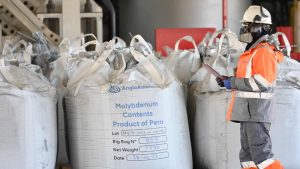Is the Glencore share price about to go gangbusters?


The Glencore (LSE: GLEN) share price has been on a huge rollercoaster over the past five years. But as I always say, volatility brings with it opportunity. Despite surging recently the stock still sits at multi-year lows.
H1 production
The stock was leading the FTSE 100 in early trading following the release of its H1 production report (30 July). Next week it will release the full set of numbers.
Following a strategic review of its industrial asset portfolio it has identified $1bn cost-saving opportunity, relative to 2024. Further details will be released on 6 August. Only a few weeks ago it announced a new $1bn share buyback programme, following the sale of its agricultural business, Viterra.
The Switzerland-based miner also reaffirmed its guidance to meet full-year production targets across its key metals portfolio. Copper production was weak in the half primarily due to lower ore grades, together with planned mining sequencing at Collahuasi and Antapaccay. But the business is expecting a significant pick up in grades in the second half.
Energy coal prices fell 20% compared to 2024. Last year, weak coal prices led to a financial loss. In order to arrest future losses, a voluntary production cut of 10% at its key Cerrejón mine took place. With the business so heavily reliant on coal, weak prices remain a major short-term concern for me.
Energy transition
If the last five years has taught me anything it’s that the energy transition will not be linear through time or through geography. The idea of a big bang approach where we simply switch from a predominantly hydrocarbon-based energy system to renewables, is away with the fairies.
While many of its peers were exiting their thermal coal operations, Glencore made a strategic choice to keep its coal mines. Indeed, as numerous companies rushed for the exit it was able to buy out many of its joint venture partner assets on the cheap. This included at Ulan, Clermont and Cerrejón.
As stated above, Last year was a tough year for thermal coal prices, which led to $1.6bn operating loss. Nevertheless, coal remains an extremely important source of base-load electricity generation across many developing countries. Indeed, even the International Energy Agency predicts that demand for coal will remain strong throughout the rest of this decade.
Trading business
Glencore’s roots lie in trading commodities across the globe. During the energy market dislocation in 2022 it turned the company into a cash cow. I believe it could be on the cusp of repeating such a feat, and potentially over a much longer time frame.
We have already witnessed extraordinary price differentials in copper following the tariff announcements. Today, commodities are increasingly being seen as strategic assets by nation states.
Reflecting improving fundamentals, the miner announced it was revising upwards its Marketing (trading) business earnings before income tax (EBIT) in the range $2.3bn to $3.5bn. That represents a 16% mid-point increase.
Glencore undoubtedly represents one of my riskier plays. In the past the company has been close to bankruptcy. But with copper production expected to double in the next five years to meet soaring demand, and insiders including the CFO buying big, I continue to add to my holdings at every opportunity.
The post Is the Glencore share price about to go gangbusters? appeared first on The Motley Fool UK.
More reading
- 2 FTSE 100 and FTSE 250 growth shares to consider in an ISA
- Up 60% in 3 months, is it too late to buy Glencore shares?
- The FTSE 100 could jump to 9,800 this year! 2 cheap stocks to consider before any surge
- Up 36% in 3 months! Is my nightmare purchase of Glencore shares about to come good with a vengeance?
- Down 37% but with 47% forecast earnings growth and $1bn buyback announced, does Glencore’s share price look cheap to me?
Andrew Mackie has positions in Glencore Plc. The Motley Fool UK has no position in any of the shares mentioned. Views expressed on the companies mentioned in this article are those of the writer and therefore may differ from the official recommendations we make in our subscription services such as Share Advisor, Hidden Winners and Pro. Here at The Motley Fool we believe that considering a diverse range of insights makes us better investors.





